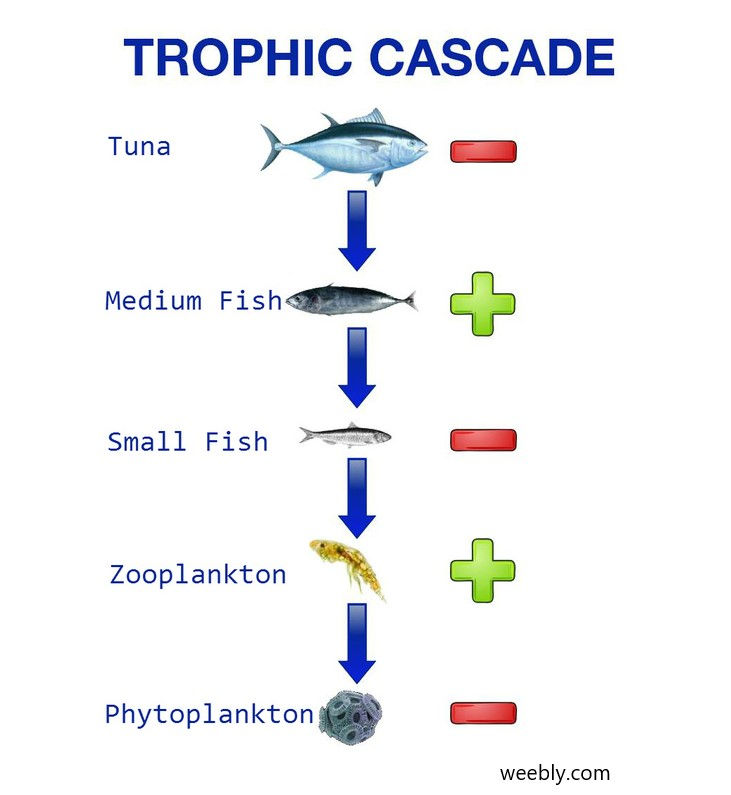Did you know? Trophic cascade
- The Torrent
- Apr 20, 2024
- 2 min read
We’ve all heard of the ‘food chain’ or even ‘food webs’ right? These terms are used to describe the relationships between predators and their prey. From top level predators right down to single-celled plants, each step in a food chain relies on the one below it to be able to survive. The picture below shows how this works.

Normally, each level of the food chain is balanced by the level above, or below it. For example, using the picture above as a reference, the primary consumers will feed on the primary producers – the primary consumers numbers are kept in check by the secondary consumers, which will prey on them and the primary producers numbers are kept in check by just the right amount of primary consumers. In this way, the whole food chain is kept in balance.
But what happens if one level of the food chain gets a bit out of whack? That’s when an imbalance through the food chain can occur in what is known as a trophic cascade.

Imagine the top-level predators in the picture above (tuna) suddenly reduce drastically in numbers – the population of the medium fish increases because they now have fewer predators, which means they eat more of the small fish, so the population of the small fish reduces – because they have MORE predators. The population of the zooplankton then increases, because there are fewer small fish to eat them, and this puts more pressure on the phytoplankton which decrease in numbers. This is what is meant by ‘trophic cascade’ – as each level of the food chain (or trophic level) is affected by what happens with the level above or below them.

This problem most often occurs from over exploitation of one level of the food chain. In many parts of the world, overfishing of a species can cause trophic cascades – tuna, sharks, Atlantic cod are a few examples. This is why it is important to harvest species sustainably, so populations are not affected to the point of disrupting the entire food chain.
Trophic cascades can affect any species - not just fish, and can occur in any ecosystem where an imbalance may occur. See the short video, below, to see what happens when sea otters are removed from an ecosystem (due to hunting - almost to exinction) for a great example of of the effects of a trophic cascade.
Video Credit: jcomeaux jcomeaux




Comments